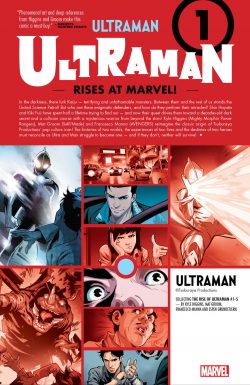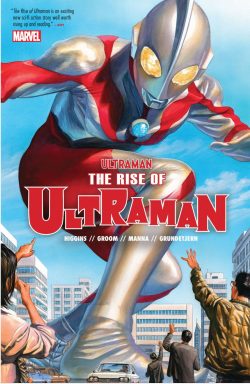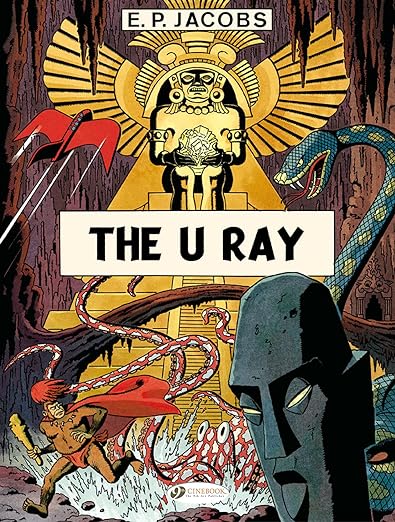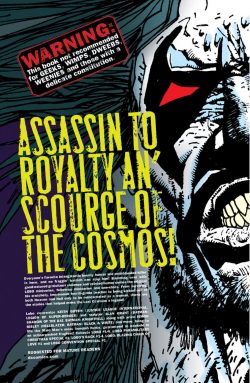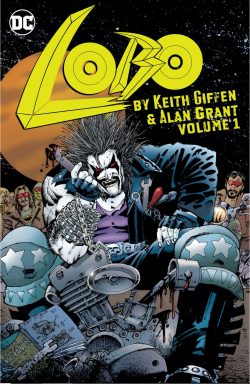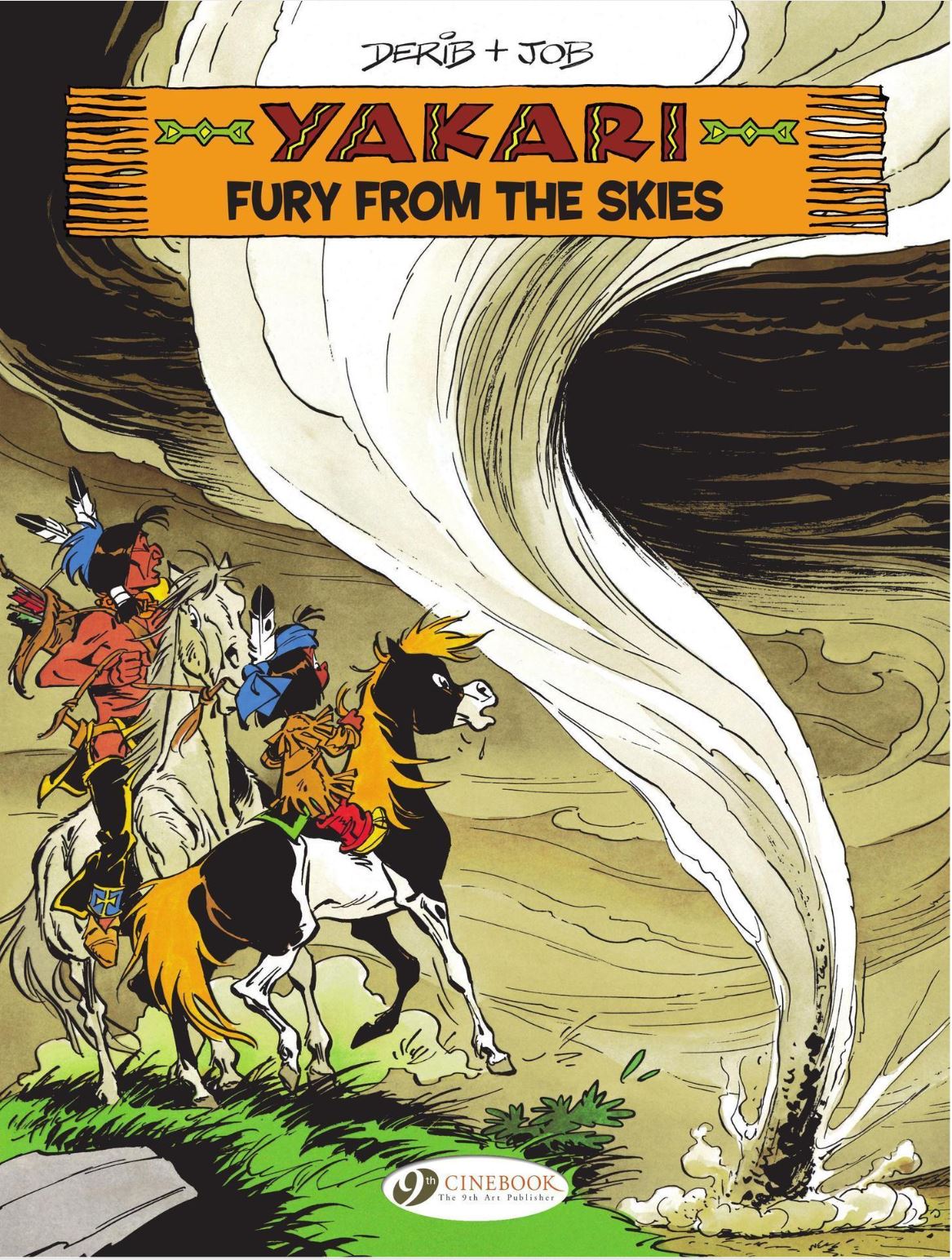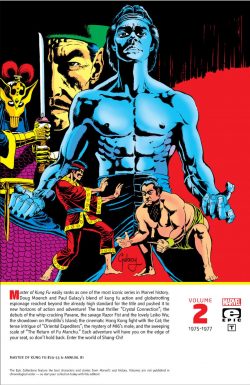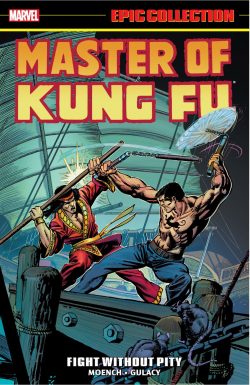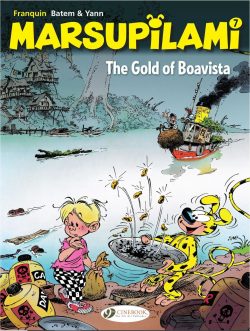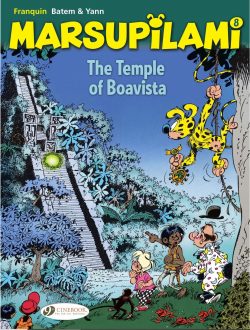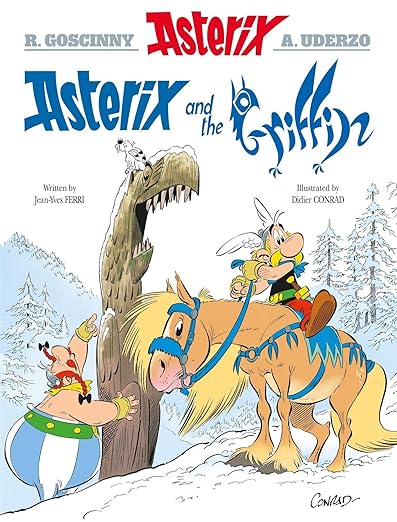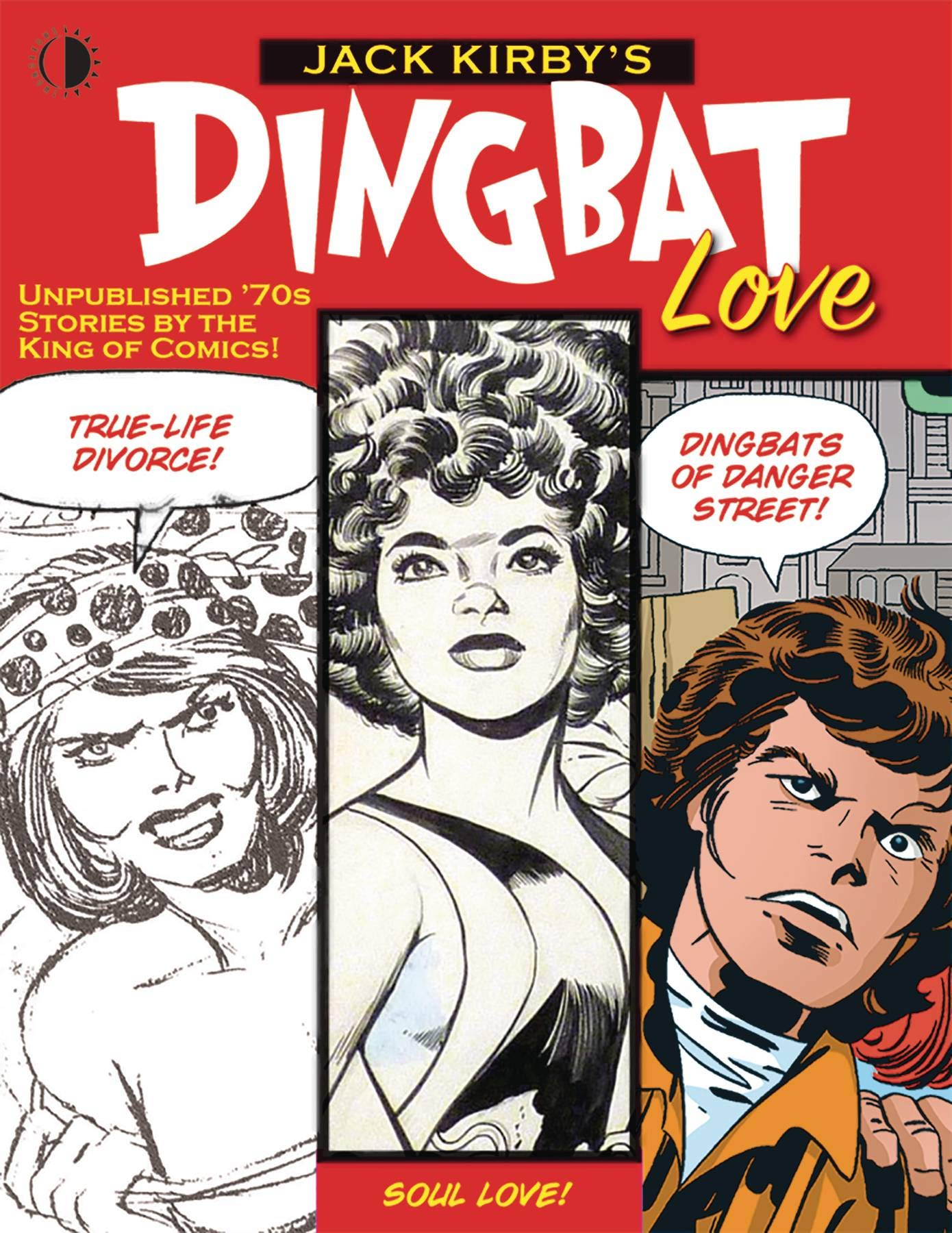
By Jack Kirby, Vince Colletta, Tony DeZuñiga, Mike Royer Alex Ross, & D. Bruce Berry, with John Morrow, Mark Evanier, Steve Sherman, Jerry Boyd & various (TwoMorrows Publishing)
ISBN: 978-1-60549-091-5 (HB)
Win’s Christmas Gift Recommendation: Lost Chances Revisited and Reassessed… 9/10
Jack Kirby was – and remains, long after his passing – the master imagineer of American comics. His collected works provide a vast and rich trove of astounding narrative delights for any possible occasion. Famed for larger-than-life characters and gigantic, cosmic imaginings, Kirby was an astute, spiritual man who had lived through poverty, gangsterism, the Great Depression, World War II and the rise and stall of the Space Age. He’d seen and survived Post-War optimism, Cold War paranoia, political cynicism and birth and death of peace-seeking counter-cultures. Above all else, he was open-minded and utterly wedded to the making of comics stories on every imaginable subject impacting the human condition, but faced resistance every step of the way…
On returning from valiant service in WWII, Jack – reunited with creative partner Joe Simon – resumed a stellar comics partnership and began producing genre material for older audiences. “S&K” famously invented the genre of Romance comics, adding a fresh strand to a canon already spanning every subject imaginable. We know Kirby mostly for reinventing superheroes, but this book of “might-have-beens” asks a powerful and – for proponents of the medium and art form – distressing question: how far would Jack have imagined and pioneered if he’d been supported in his experiments rather than continually undercut and sandbagged?
Kirby always understood the fundamentals of pleasing an audience and toiled diligently to combat the appalling prejudice about the word-&-picture medium – especially from insiders and professionals who despised the “kiddies’ world” they felt trapped in. During the 1950s, changing tastes, dog-whistle politics and an anti-crime, anti-horror witch-hunt quashed the mature end of the US comics industry, and under a doctrinaire, self-inflicted conduct code, publishers stopped innovating and embraced more anodyne fare. This holding pattern saw the demise of many smaller publishers and persisted until the rebirth of superheroes…
From 1956, after he and Simon closed their own studio, Jack rejoined a dying outfit using the name “Atlas”. Kirby partnered with Stan Lee on science fiction, mystery, war and western anthologies and, when superheroes were revived, swiftly changed the world with a salvo of bold new concepts and characters that revitalised – if not actually saved – the comics business.
However, after little more than a decade, costumed characters began to wane again as public interest in the supernatural grew. With books, television and movies all exploring “The Unknown” in gripping and stylish new ways, the Comics Code Authority sought to slacken its censorious chokehold on horror titles, hoping to save the industry from implosion when the superhero boom busted. Enduring increasing editorial stonewalling and creative ennui at Marvel, in 1970 Kirby (after breaking ground with a few horror shorts for the House of Ideas’ new anthology titles) accepted a long-standing offer from arch rival DC Comics…
Promised freedom to innovate, one of the first projects he tackled was an entirely new full-colour, slick paper magazine format carrying material targeting adult readerships. However, backtracking almost immediately, DC’s powers-that-be incrementally cut a wide prospectus of fresh ideas and titles for “The Speak-Out Series” to a brace of pulp paper, monochrome magazines: In The Days of The Mob and Spirit World – and even let those wither after a single issue of each.
For the full story of how that worked out, you can read Mark Evanier’s acerbic article in this glorious oversized (227 x 280 mm) hardback compilation. He was there and knows a lot of the secrets. There’s also commentary from his editorial studio partner who was also part of the sabotaged project that could have forced American comics to grow up a generation earlier than they did. He closes this tome with ‘Speaking Out – An Afterword by Steve Sherman’…
Dingbat Love combines lost stories and unseen art with a history of how it all went wrong. There’s even a reconstruction from extant material and informed deduction of how one of Kirby’s proposed gamechangers might have looked, but we open with ‘A Foreword, Looking Back’ by ultimate fan John Morrow and a discussion of the proposed big gun launch in ‘True Life Divorce’ – an Introduction by Mark Evanier offering background and context.
The remaining comics material intended for True-Life Divorce follows as happily-married Kirby explored the contentious hot button topic of marriage and separation. All his proposed titles were intended to be collaborative projects with The King starting each for other writers and artists to continue, but throughout the creative process DC insisted their superstar creator carry the bulk of the output: a herculean task even for the legendarily prolific auteur.
‘”The Ladies Man”’ – by John Morrow’ then explores Kirby’s women characters, beginning in the era when Emancipation gave way to Liberation and over half the planet started finding powerful role models addressing their lives and experiences. As with the Romance revolution of 1947, Kirby’s goal was to make comics women would read and a rough plan of the contents of True-Life Divorce #1 precedes a magazine where marriage counsellor Geoffrey Miller would share case details of his clients. Racy, thought-provoking but never salacious, the surviving results here are pencilled tale ‘The Maid’ and partially-inked (by Vince Colletta) ‘The Twin’.
Morrow then discusses a breakthrough story that derailed everybody in ‘The Missing Model’ which featured a black woman and her problems with two men. It’s followed by her tragically incomplete tale in 7 pages of 10 (again inked by Coletta) detailing the choices she was forced to make in ‘The Model.’ This particular story caused a storm at DC, as the publishers saw a way to enter the growing and vibrant market of publications for African Americans at a time when comic book sales were in a brutal decline…
More on that later, but here True-Life Divorce #1 finishes with the all-pencilled drama of ‘The Other Woman’ after which ‘And Now… Mike Royer’ discusses a rare snippet probably intended for a second issue and inked for this book by Kirby’s most effective and dedicated embellisher. ‘The Cheater’ is printed with each pencilled page beside Royer’s inked one.
The result of DC’s interest in “The Model” led to the company pressuring Kirby to create a romance magazine for black readers, based on recent ethnocentric style magazines Jet and Ebony.
Although Kirby reluctantly agreed to the project, he again urged the editors to hire young and/or black creators for the prosed periodical alternatively dubbed Soul Romance or Soul Love – and with as little success. Here in ‘A Little Love for Soul Romance’, John Morrow provides a brief history of comic books aimed at African Americans (including Negro Romances and Negro Heroes) and discussion of creators of colour and a critical assessment by black writer Jerry Boyd in ‘Let Your Soul… Love!’ precedes a bold and brave experiment: ‘Soul Love #1 Facsimile Edition.’
With a few willing accomplices, Morrow uses Kirby’s delivered stories for the book to create a reasonable draft of what the King always intended: a glossy paper, full colour magazine with faux ads and editorial content such as ‘Equal Rights Aren’t Wrong’ supporting his comic tales. Inked by Tony DeZuñiga and Colletta these include ‘Fears of a Go-Go Girl!’, ‘Diary of a Disappointed Doll!’, ‘Dedicated Nurse!’, ‘Old Fires!’, and unembellished tale The Teacher’, all fronted by a painted cover by Alex Ross based on a Kirby rough. The project ended ignominiously and was unceremoniously shelved when DC’s sales and distribution team killed it, citing no reasonable way to reach black markets and stores…
‘Another Introduction by Mark Evanier’ details those scary days when comic books almost died as an industry and the febrile period when DC demanded its creators create a wave of new titles and concepts to combat Marvel flooding newsstands with reprint comics. Kirby and Joe Simon responded with a number of books and ideas (and numerous completed stories) but when the company backtracked most of the initial outings (Atlas, Manhunter, The Green Team, The Dingbats of Danger Street, The Outsiders) were bundled into new try-out title 1st Issue Special with Kirby’s Kobra radically retooled before later release. Only their collaboration on a new Sandman was judged sufficient to publish eventually running six issues.
Simon’s The Green Team and Kirby’s The Dingbats of Danger Street were both modern takes on the Golden Age “Kid Gang” concept that had paid such huge dividends with their Young Allies, Boy Commandos, Newsboy Legion, Boys Ranch and Boy Explorers series, and are fully detailed in Morrow’s essay/commentary ‘Danger Street’s Back Alleys’.
Their only official appearance in pre-Crisis on Infinite Earths continuity was in 1st Issue Special #6 (September 1976), with Royer inking a bizarre and hilarious revival of the subgenre starring four multi-racial street urchins (Good Looks, Non-Fat, Krunch and Bananas) united for survival and annoying the heck out of cheesy thugs and surreal super threats like Jumping Jack and The Gasser as well as local cop Lt. Mullins…
You’ll need to see DC’s 1st Issue Specials for that yarn, but it transpires – for complex reasons you’ll learn when you buy this book (heck, buy ‘em both!) – that at least two – and perhaps 4 more – full stories were readied at the time. Here, what would have been the second and third outings have been inked by Royer and show in full colour the King layer on drama and tragedy to what appeared to be a comedy feature as ‘The Dingbats of Danger Street #2’ sees Good Looks go dark and hunt professional killer ‘Snake-Meat’ for the oldest reason imaginable: ‘Vengeance’…
These stories incorporate glorious multi-page foldouts breathtaking in their graphic shock-value and offer original art reproductions of the first story and page layouts for later ones…
Bruce Berry-inked ‘The Dingbats of Danger Street #3’ focuses on Krunch in a disturbing exploration of child abuse, family exploitation and reasons for runaways by introducing Uncle Birdly and ‘The Dark, Dark, Cellar!’ where he expects to hear his charges ‘Scream, Baby Scream!’…
Packed with unseen art pages, promotional materials, sketches. notes and photos, and compiling work commissioned then cancelled this a wonderful treat for fans but regrettably, not a book you can read digitally yet, but hope springs eternal…
Decades after his death Jack Kirby remains a unique and uncompromising artistic force of nature: his words and pictures an unparalleled, hearts-&-minds grabbing delight no comics lover could resist. If you’re not a fan or simply not prepared to see for yourself what all the fuss has been about then no words of mine will change your mind.
That doesn’t alter the fact that Kirby’s work from 1937 to his death in 1994 shaped the entire American scene and indeed the entire comics planet – affecting the lives of billions of readers and thousands of creators in all areas of artistic endeavour for generations. He’s still winning new fans and apostles, from the young and naive to the most cerebral intellectuals. Jack’s work is instantly accessible, irresistibly visceral, deceptively deep whilst simultaneously mythic and human. And that’s all of us, right?
Wherever your tastes take you, his creations will be there ready and waiting.
Jack Kirby’s Dingbat Love editorial package © 2019 TwoMorrows Publishing. Soul Love cover painting © 2019 Alex Ross. Introductions © 2019 Mark Evanier. Afterword and photos © 2019 Steve Sherman. “Let Your Soul… Love!” © 2019 Jerry Boyd. True-Life Divorce, Soul Love, Dingbats of Danger Street and all other DC Comics characters ™ & © DC Comics. All Rights Reserved. All other characters and properties used ™ &/or © their respective rights owners and holders.

